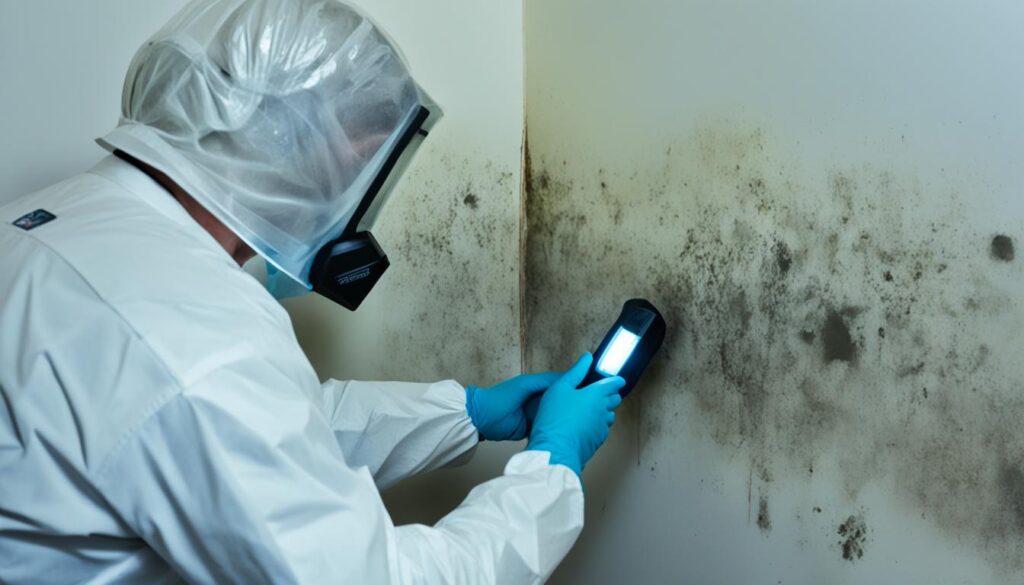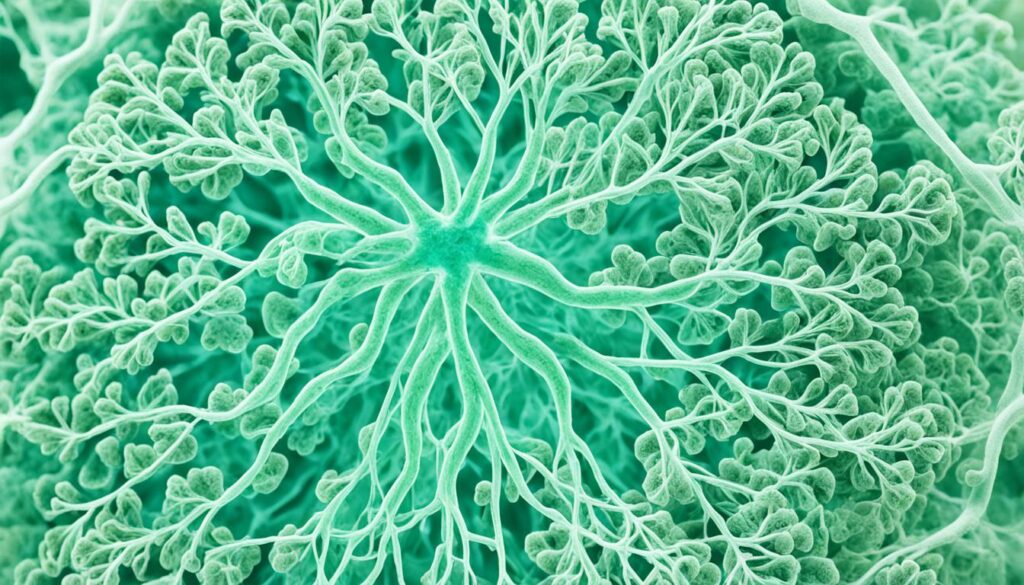
Understanding Risks of Mold Toxicity in Homes
In today’s article, we will explore the risks associated with mold toxicity in homes. Mold, a common household problem, can pose significant health hazards if left untreated. By understanding the dangers of mold and taking appropriate measures, homeowners can ensure a safe living environment for themselves and their families.
Mold toxicity refers to the harmful effects caused by exposure to certain types of mold. While mold exists naturally in the environment, its growth indoors can lead to serious health consequences. In homes, mold can be found in areas with excess moisture, such as bathrooms, kitchens, or basements. It thrives in damp conditions, often unnoticed until the damage is severe.
Exposure to mold can trigger various health issues, including respiratory problems, allergies, and asthma attacks. Individuals with pre-existing respiratory conditions or compromised immune systems are particularly at risk. Therefore, it is crucial to be aware of mold toxicity and take preventive measures to avoid potential health complications.
Identifying the presence of mold in your home is the first step in addressing the issue. Common signs include visible mold growth, a musty odor, and allergic reactions like coughing, sneezing, or skin rashes. If you notice any of these symptoms or suspect mold growth, it is essential to act promptly to minimize health risks.
Key Takeaways:
- Mold toxicity can pose significant health risks to homeowners.
- Mold often thrives in damp and moist areas of the home.
- Exposure to mold can lead to respiratory problems and allergies.
- Identifying mold through visible signs and allergic reactions is crucial.
- Acting promptly to address mold issues is essential in ensuring a safe living environment.
Identifying Mold Toxicity in Your Home
In this section, we will discuss the signs and symptoms of mold toxicity in homes. It is crucial to be able to identify the presence of mold in order to address the issue promptly and ensure a safe living environment.
Visible Signs of Mold
Mold can often be easily detected through visible signs. Look out for the following:
- Black, green, or brown patches on walls, ceilings, or floors
- Stains or discoloration on surfaces
- Peeling or bubbling paint or wallpaper
Musty Odors
Mold often emits a distinct musty odor. If you notice an unpleasant smell that lingers in certain areas of your home, it may indicate the presence of mold.
Allergic Reactions
Allergic reactions can be indicators of mold toxicity. Some common symptoms include:
- Respiratory issues such as coughing, sneezing, and wheezing
- Itchy or watery eyes
- Runny or congested nose
- Skin rashes or hives
If you or your family members experience these symptoms when at home, it is essential to investigate the possibility of mold growth.
Potential Mold Growth Areas
Mold thrives in moist environments. Some common areas where mold is likely to grow in homes include:
- Bathrooms, especially under sinks and around showers
- Kitchens, particularly near faucets and under appliances
- Basements and crawl spaces
- Attics with inadequate ventilation
Regularly inspecting these areas and addressing any signs of mold growth can help prevent mold toxicity and maintain a healthy home environment.

Health Implications of Mold Toxicity
Mold toxicity can have significant health implications for individuals and their families. Exposure to mold can lead to various health problems, particularly affecting respiratory health and triggering allergies. It is crucial to address mold issues promptly to safeguard the well-being of everyone in the home.
When exposed to mold, individuals may experience respiratory symptoms such as coughing, wheezing, and shortness of breath. Prolonged exposure to mold spores can exacerbate pre-existing respiratory conditions, such as asthma and bronchitis, and may even lead to the development of respiratory infections.
In addition, mold exposure can also trigger allergic reactions in susceptible individuals. Common allergic symptoms caused by mold include sneezing, itchy and watery eyes, nasal congestion, and skin rashes. For individuals with allergies or asthma, mold can worsen their symptoms and make their daily lives more challenging.
“The effects of mold toxicity on respiratory health can be severe and long-lasting. It is essential to address any mold issues in your home to preserve the health and well-being of your family.”
Moreover, mold toxicity can have broader health implications beyond respiratory and allergic reactions. Research suggests that exposure to mold may contribute to the development or worsening of other health conditions, such as immune system disorders, neurological symptoms, and even certain types of cancers. While further studies are needed to fully understand these links, it is crucial to minimize mold exposure to reduce potential health risks.
To protect against the health implications of mold toxicity, it is imperative to effectively address mold issues in homes. This includes identifying and eliminating the source of mold, improving ventilation, reducing moisture levels, and employing appropriate cleaning and remediation techniques. Seeking professional assistance, such as contacting Fix Mold Miami at 305-465-6653, can ensure thorough mold assessments and safe remediation practices.
By being proactive in addressing mold toxicity, individuals can significantly reduce the health risks associated with mold exposure and create a healthier living environment for themselves and their loved ones.
Key Health Implications of Mold Toxicity:
- Respiratory symptoms, including coughing, wheezing, and shortness of breath
- Exacerbation of pre-existing respiratory conditions, such as asthma and bronchitis
- Allergic reactions, such as sneezing, itchy and watery eyes, nasal congestion, and skin rashes
- Potential links to immune system disorders, neurological symptoms, and certain cancers

Prevention and Remediation Against Mold Toxicity
Mold growth in homes can pose serious health risks, making prevention and remediation crucial. By taking proactive measures, homeowners can create a safe and healthy living environment for themselves and their families. Here, we will explore the necessary steps to prevent mold growth and effectively remediate mold toxicity.
Preventing Mold Growth
Prevention is the key to avoiding mold issues in your home. Follow these tips to minimize the risk:
- Maintain proper ventilation: Ensure that your home is well-ventilated, especially in areas prone to moisture, such as kitchens, bathrooms, and basements. Proper airflow helps to reduce moisture levels and prevent mold growth.
- Control moisture: Regularly inspect your home for any water leaks, both visible and hidden. Promptly repair any leaks and address excessive moisture issues. Use dehumidifiers in humid areas to maintain optimal humidity levels (below 50% relative humidity).
- Monitor indoor humidity: Use a hygrometer to measure indoor humidity levels and keep them within the recommended range.
- Properly seal windows and doors: Ensure that windows and doors are properly sealed to prevent water infiltration during rain or extreme weather conditions.
- Regularly clean and maintain: Regularly clean and maintain areas prone to mold growth, such as bathrooms, kitchens, and basements. Use mold-resistant products and materials in these areas to minimize the risk.
Remediating Mold Toxicity
If you suspect or identify mold growth in your home, it’s essential to take immediate action for remediation:
- Assess the extent of mold contamination: Hire a professional mold assessment company, such as Fix Mold Miami at 305-465-6653. They will conduct a comprehensive assessment to determine the extent of the mold problem and identify its source.
- Engage professional mold remediation services: If the mold contamination is significant or widespread, it’s best to seek professional help for remediation. Trained experts will use industry-standard practices and equipment to safely remove the mold and restore your home to a healthy condition.
- Follow remediation protocols: During mold remediation, professionals will follow specific protocols to contain the mold spores and prevent further contamination. They will use techniques like physical removal, HEPA filtration, and antimicrobial treatments to eliminate the mold and prevent its recurrence.
- Address underlying moisture issues: Remediation must include addressing the underlying moisture issues that caused the mold growth. Fixing leaks, improving ventilation, and controlling humidity levels will prevent future mold problems.
- Monitor and maintain: After remediation, regularly monitor your home for any signs of mold regrowth and promptly address them. Implement preventive measures and maintain a clean and dry environment to prevent future mold toxicity.
Conclusion
In conclusion, mold toxicity poses significant risks to homeowners and their families. It is crucial to be aware of these risks and take appropriate measures to create a safe and healthy living environment.
Identifying the presence of mold in your home is the first step towards addressing the issue. Look out for visible signs of mold growth, musty odors, and allergic reactions. By understanding the signs and symptoms, you can take timely action to prevent further spread of mold and protect your health.
The health implications of mold toxicity cannot be underestimated. Prolonged exposure to mold can lead to respiratory problems, allergies, and other health complications. It is essential to address mold issues promptly, ensuring that your home is free from this hazardous substance.
Prevention and remediation play a vital role in combating mold toxicity. Effective measures such as proper ventilation, moisture control, and regular cleaning can help prevent mold growth. For thorough assessment and professional remediation services, contact Fix Mold Miami at 305-465-6653. By taking preventive and remedial actions, homeowners can create a healthier living environment for themselves and their loved ones.




